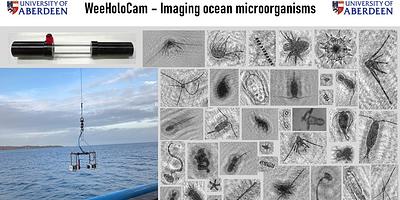
Digital Holography and the behaviour of Plankton
Digital Holography and how it helps us study the behaviour of Plankton, by Professor John Watson & Dr Thangavel Thevar
What is plankton and why is it important
As many of you will know, plankton are tiny marine organisms which inhabit the seas, oceans and waters of our planet Earth. As you swim in the sea you are literally surrounded by millions of these minute organisms. They play a vital part in the ecology of our planet since they lie at the bottom of the worlds’ food chain and are sensitive indicators of the health of the oceans. Plankton come in many guises: two suitable divisions are phytoplankton and zooplankton. Phytoplankton is a vegetable; it grows and survives by absorbing energy from sunlight. Individual species of phytoplankton tend to be less than100 micrometres (µm) in size and only exist in roughly the first 100m of depth of the marine column. In contrast, zooplankton are animals and can be found down to thousands of metres at various times, seasons and locations. Zooplankton eats phytoplankton, fish eat plankton and we eat fish; and so it goes on up through the chain to affect all life on Earth. Anything that has an effect on the growth, behaviour and distribution of plankton ultimately affects us and, accordingly, the environment.
It is crucially important, therefore, for scientists to be able to monitor the behaviour patterns of plankton through their life cycles and habitats, in order to determine their distribution and population concentrations and study their environmental impact. There are literally thousands of different species of plankton (too many to list here) ranging from dinoflagellates, diatoms, nauplii, copepods, jellyfish larvae and range in size from a few micrometres to several millimetres.
Why digital holography to study the behaviour of plankton?
Many methods have been developed to study plankton, such as acoustic monitoring, photography and video, plankton net samplers, plankton counters and so on. More recently a novel method of imaging, identifying and counting the different species is holography. Holography is an optical imaging technique. It is difficult to explain in a few words, but its advantages include high resolution imaging, the ability to capture large volumes of the water column with all the particles recorded in sharp focus throughout the recorded volume; and more recently this can now be done in near real-time. Holography is unlike conventional photography: when a conventional camera (e.g smartphone or digital camera) is used to image small particle of a few millimetres or less, the camera has to be close to the subject, only small volumes can be recorded and the image can suffer from perspective distortion (i.e. the parts of the image closer to the camera appear larger than those bits that are further away). A hologram suffers from none of these disadvantages.
We, at the University of Aberdeen, have been studying the use of holography to image minute particles for many years. We have developed a series of underwater holographic cameras (holocameras) to record plankton and other marine organisms in situ. Our first subsea holocamera (HoloMar) was a massive 2 tonnes and was 2m long by 1m diameter (see below).
This was deployed in Loch Etive in 1999/2000 and recorded holograms to a depth of 100m on photographic film. From this beginning, our new holocameras have been designed to record digital holograms in a much smaller and lighter package.
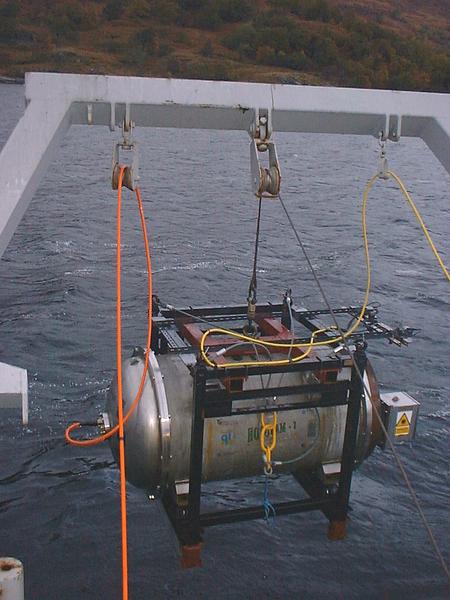
How a digital hologram is recorded and replayed
The diagram below shows the elements of holographic recording and replay. A beam of laser light passes through the scene to be recorded and falls on the sensor (originally photosensitive materials, but now electronic sensors). Any particles or organisms in the water scatter the light towards the sensor. There is enough unscattered background light passing through the water to combine with the scattered light at the sensor; this is the “hologram” and is stored numerically in a computer. Although not recognisable as a conventional image, the hologram contains information about all the particles in the original scene no matter where they are in the beam path. These particle images can be replayed (re-constructed) and viewed at any plane in the recorded volume by telling the computer that the hologram it is being re-illuminated by the original laser beam. We can scan through the volume to produces images of all the particles in the scene, at any location. The reconstructed holograms can be analysed to monitor the location of individual organisms and their spatial relationships with each other.
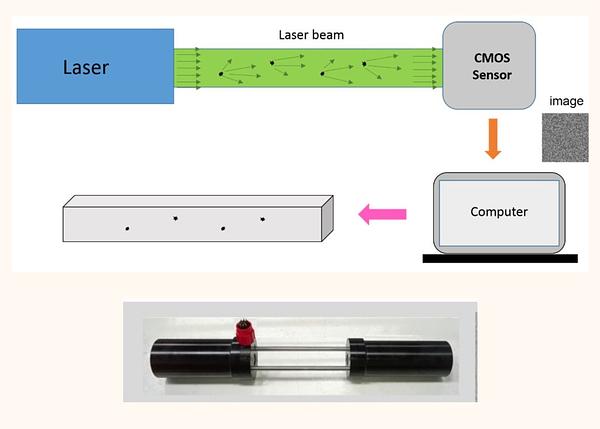
Our weeHoloCam (9 cm diameter and 60 cm long), developed at the University uses a laser producing very short pulses (about three thousand millionths of a second!) of green light to record the holograms. It can record up to 20 holograms per second. Because the duration of each pulse is so short it effectively freezes any motion of the organisms in the water column.
Deployment of weeHoloCam
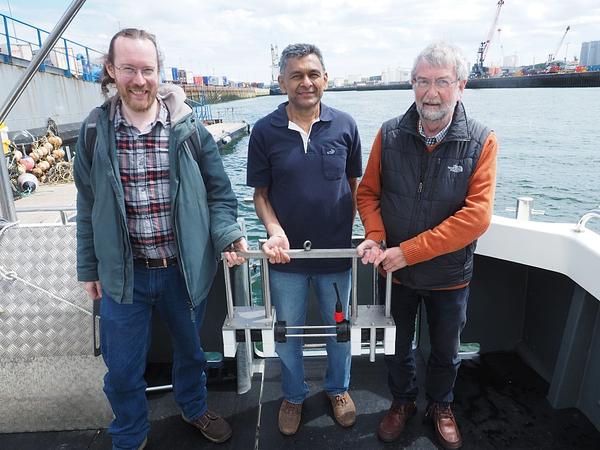
weeHoloCam can be deployed from a remotely operated vehicle (ROV), towed from a boat or lowered into the sea. The diagram below shows weeHoloCam being deployed in the North Sea about 3 miles offshore from Aberdeen harbour. A composite of images of various organisms and species of plankton recorded in several deployments in the North Sea and Loch Awe and other locations.
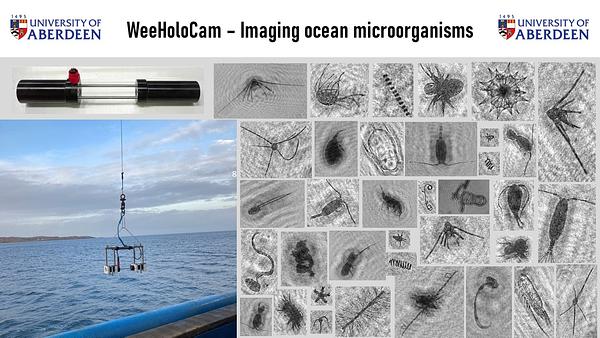
What next?
When holographic video is recorded, it is also possible to extract time-dependant information, however, the vast data capturing capabilities of digital holography make extraction and analysis of the data very time consuming and computer intensive. A single holographic video may contain up to as much as 2 GB of data: we have developed automated focusing and image extraction software to allow rapid in-situ, near real-time analysis of the holograms in the onboard computer. The final piece of the jigsaw involves developing image classification algorithms for rapid interrogation and identification of the organisms in the water column and collate them into individual species or groups such as dinoflagellates, diatoms, nauplii, copepods or jellyfish larva.
Acknowledgements & links for further info
Thanks to Dr Nick Burns and Mike Ockwell of HiZ 3D, Aberdeen for their work on the associated software.
You can find out more about Dr Thangavel Thevar’s fantastic research here: https://www.abdn.ac.uk/engineering/people/profiles/t.thevar
And go to the University of Aberdeen School of Engineering webpage here: School of Engineering | The University of Aberdeen (abdn.ac.uk)
